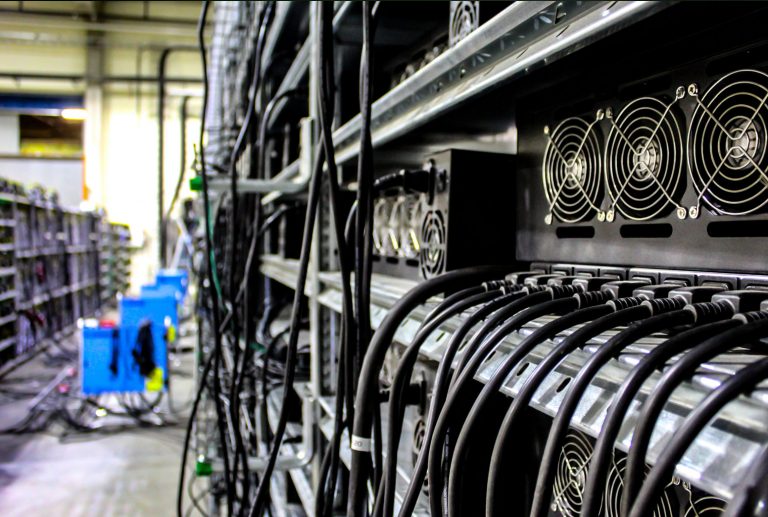
2019-2-14 01:50 |
Over the last two months, the hashrate between the Bitcoin Cash (BCH) and Bitcoin Core (BTC) networks has increased significantly since hitting a low on December 15, 2018. Numerous reports detail that many Chinese miners who control a large portion of SHA-256 hashrate have been recently setting up shop in Sichuan. During the wet season here, miners can get an astounding 0.08 yuan per kWh or $0.01 per kWh.
Also Read: Self-Proclaimed ‘Satoshi’ Responds to Billion-Dollar Bitcoin Lawsuit
Chinese Mining Operations Return to Sichuan in Order to Snatch Cheap Hydro PowerSeveral reports detail that during the last three weeks, Chinese miners have been flocking back to the Sichuan region in order to obtain cheap hydroelectric energy. The migration follows the significant hashrate decline in December when the SHA-256 hashrate between BTC and BCH declined by about 30 percent from its all-time high. During the dry season in Sichuan, Chinese miners positioned themselves in other locations throughout China and other countries when the fiat value of cryptocurrencies, in general, was much higher. Back in 2015-2016, it was estimated that more than 70 percent of the SHA-256 hashrate stemmed from China and 70 percent of the hashpower from these Chinese facilities derived from Sichuan. But when the price of BTC and many other coins skyrocketed, large Chinese mining operations trekked to other areas and sought out electric subsidies from local governments.
Sichuan, China, situated at more than 3,000m elevation is famous for its rivers and colorful pools formed by calcite deposits. Many of the rivers and waterways supply hydroelectricity plants with energy and bitcoin mining facilities have operated in the mountainous region for years.For instance, Chinese journalist Eva Xiao reported in August 2017 how large bitcoin mines were partnering with local Chinese governments for cheaper electricity from the State Grid. The reason for the strategic move was because unlike the dry and wet seasons in Sichuan, government partnerships provide static electrical rates that remain fairly steady. Bitmain did this with the company’s mine in Ordos in Inner Mongolia when it acquired electricity from the State Grid for $0.04 per kWh. Xiao details that in exchange, Bitmain allowed the Ordos mine to be taxed. However, regional reports published on Jan. 21, 2019 state that an influx of Chinese miners has been returning to Sichuan for the wet season. The China-based publication recently explained that during the dry season in Sichuan, hydroelectric costs are three times higher than the wet season.
“This tragedy will seemingly come to an end as soon as the rainy season is expected to come in April,” local reporter Lylian noted. “The 1,419 rivers in the region will soon wake up to propel the roar of 3,267 hydro plants — Numerous bitcoin mines will revive as they will have cheaper and sufficient power supplies.”
The report continued:
In the period of high water, the cost of electricity in Sichuan can be as low as 0.08 yuan ($0.01), while the electricity cost of thermal power in the dry season is 0.28 yuan ($0.04).
Reports also detail that second-hand Antminer S9s are selling for $119 per unit. Bitcoin Prices Still Have to Appreciate Before the HalvingMining operations are also enticed by the cheap hardware costs these days, as lots of mining rig prices have been slashed. Local columnist Chloe Jiang reveals that a second-hand Antminer S9 will set someone back about 800 yuan ($119) per unit. According to the top mining rig manufacturer websites like Bitmain, Ebang, and Canaan, older units are very inexpensive right now. Jiang remarks that cheap mining rigs and $0.01 per kWh electric prices in Sichuan may help miners survive the ‘crypto winter.’ However, unconfirmed reports detail that Sichuan police are trying to shut down future cryptocurrency mining operations per order of the Sichuan provinces’ local government. Although one local called the report “rubbish” and says there are so many of these rumors “that it has no effect on bitcoin.”
Bitcoin Core (BTC) hashrate increase since Dec. 15, 2018.The overall hashrate between both of the most dominant SHA-256 networks shows miners seem to be returning in greater number with many of them joining unknown pools. Analysts believe that at current electric prices worldwide and the upcoming reward halving for both networks, the price of BTC and BCH needs to rise to at least double current spot prices in order to maintain profitability.
What do you think about miners returning to Sichuan for cheap electricity? Let us know what you think about this story in the comments section below.
Image credits: Shutterstock, Blockchain.com, and Pixabay.
Need to calculate your bitcoin holdings? Check our tools section.
The post Chinese Miners Flock to Sichuan for Cheap Electricity During the Wet Season appeared first on Bitcoin News.
origin »Miners' Reward Token (MRT) íà Currencies.ru
|
|






